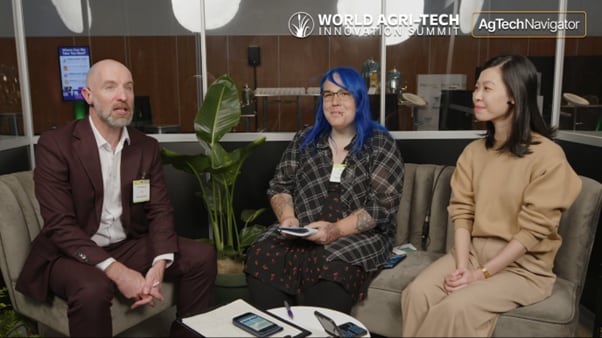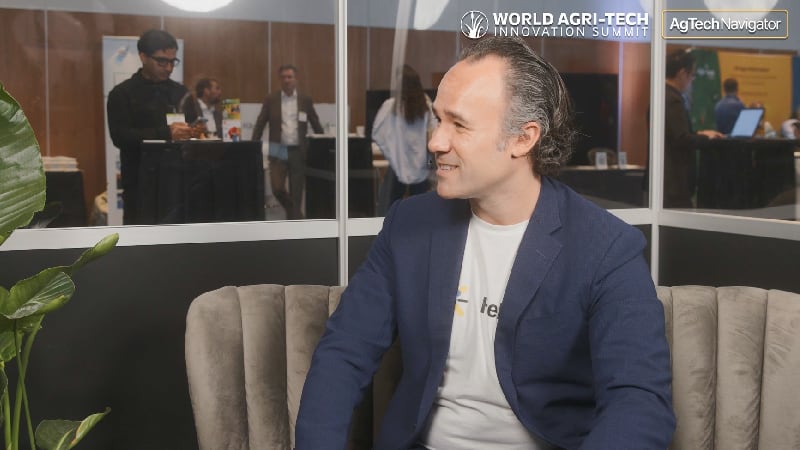Shifting a food system that prioritizes calorie-dense foods and scale at all costs to a more regenerative system that gives back to farmers and consumers is no small feat and requires collaboration from different industries and stakeholders, Christine Gould, CEO and founder of Giga, told AgTechNavigator, at the World Agri-Tech Innovation Summit in London last month.
Gould wrote the book on why food system change is hard and how to overcome roadblocks, with her 2024 book, The Change-Maker’s Guide to Feeding the Planet: How to Solve Big Problems the Next Gen Way. At Giga, she helps startups move beyond the pilot phase towards scalability — all to improve the food system.
The need for food system change could not be clearer between environmental concerns and worsening health outcomes, but making food system changes that stick has been difficult, Gould noted.
“Our food system is a system, and systems are intrinsically complex — effected by many things and affecting many things. ... We have designed a system that is one-dimensional in its focus. We have designed a system that was built to deliver calories [and] shelf-stability with speed and scale. And that was designed for a reason. It was in the context of the times. We needed to achieve those outcomes, but now those outcomes have come with tradeoffs,” Gould said.
She elaborated, “Those tradeoffs include some of the things we are seeing, whether that be environmental degradation, malnutrition, and disease that comes from over consumption, waste, and all of those tradeoffs don’t need to exist anymore. We actually have incredible tools at our disposal – that is technologies, robotics, AI, [and] the plethora of data that we have.”
Is Singapore a model for a new food system?
Regulations play a major role in creating a more sustainable food system by incentivizing innovative start-ups and specific business activities that can create a more sustainable food system. Governments are waking up to the need for a food system change due to increased supply chain disruptions, which were exacerbated during COVID and geopolitical events, Gould noted.
“Many people are saying, ‘Wait a second, I need to not just be a net food exporter, but how can I actually focus on my local food security?’ How can I be less reliant on importing fertilisers, etc.? So, this is a huge opportunity for innovation to come to help address those questions and connect the dots,” she elaborated.
Singapore’s “30 by 30 model” provides a blueprint on what food system change looks like, where the city-state is striving to become 30% food secure by 2030 through investments in aquaculture, controlled-environment agriculture, and alternative proteins, Gould said.
The government must work with agtech companies to tell a compelling positive story about technological advancements and how they can create a more sustainable future, she noted.
“We need to market this industry to consumers. We need to talk about regenerative ag loudly and proudly. We need to talk about gene editing with a new narrative that this is actually the coolest technology that can help us redesign crops and microbes to deliver the outcomes we all care about. So that narrative shaping is also something that can then help the regulators create more enabling pathways,” she added.
What role does CPG have in building a more sustainable food system?
Consumer packaged goods (CPG) companies also play a major role in creating a more sustainable food system by what they purchase, with many food manufacturers having specific requirements on what they purchase (i.e., deforestation-free cocoa, organic coffee, etc.). Agtech can help CPG source these raw ingredients, especially during moments of volatility, Gould said.
“If a CPG who needs to meet specific specs in their procurement teams at volumes that are sustainable and consistent, how can they do that in a world that is becoming more volatile? Well, innovation is one of the answers, and they need to be looking down at the farm and see where agtech can play a role to help their farming operations deliver against those specs and help to make those contracts and volumes that they need more possible,” she elaborated.



